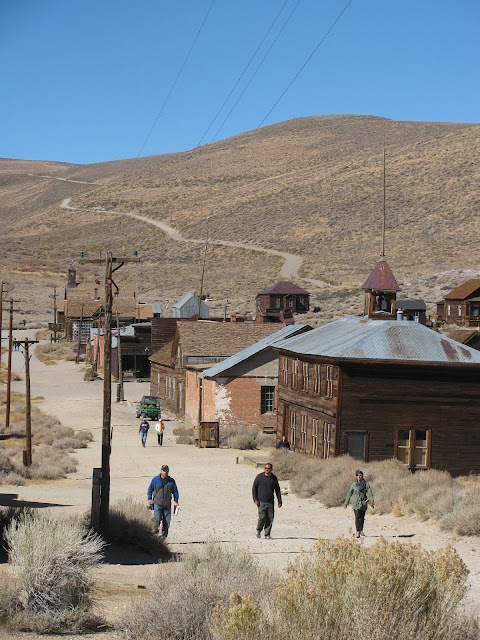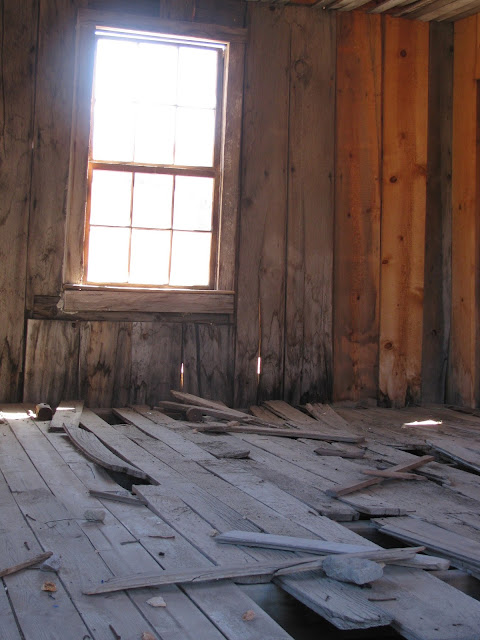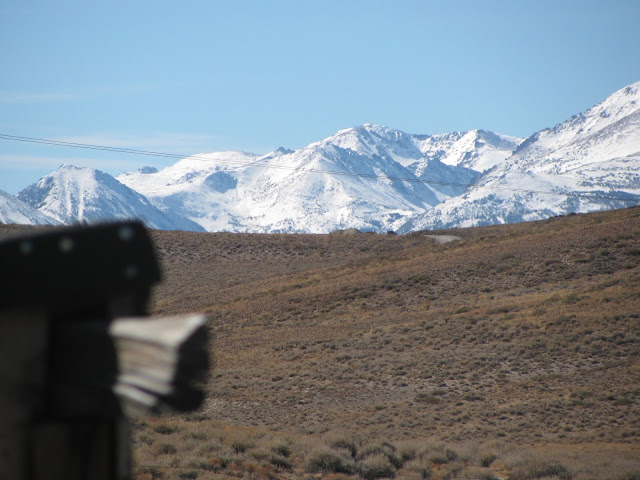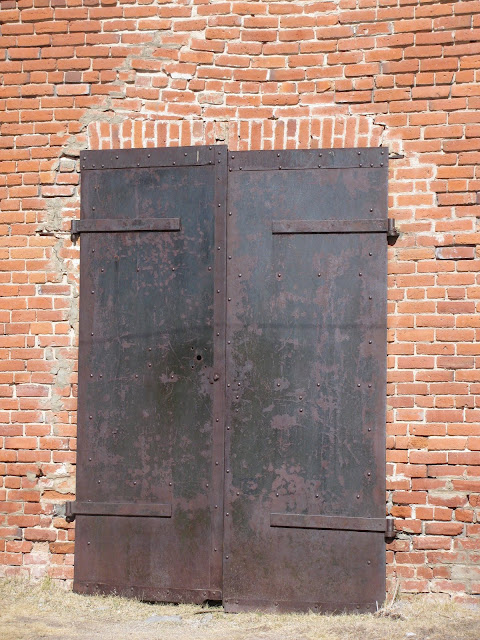The old mining town of Bodie is as close to the middle of nowhere as is possible.
From the well-traveled Highway 395 that runs North and South along the backside of the Sierra Nevada Mountains, you hang a sharp turn to the East from a canyon where Washoe Indians once lived in relative isolation. You climb high into the barren hills to get there.
The road into Bodie, part paved and part gravel, snakes past Basque shepherds watching hundreds of sheep, and barren hills with no fences.
 |
The "Main" road into Bodie wanders its way across the hills
|
In 1859 the isolation changed. A miner from New York state named W.S. Bodey discovered gold. He died in a blizzard that winter and his bones were lost 20 years later, probably buried on the hillside above the remnants of the town. The town is named after him, misspelled name and lost bones notwithstanding.
The big strike happened in 1875 when a mine collapse revealed a rich seam of gold. Within a few years up to 8,000 people lived in this place, and 30 mines and nine stamp mills were operating around the clock. The 60 saloons and whore houses stayed busy.
The noise must have been awful, with the stamps pounding the quartz rock around the clock. And the fights and the shootings which were commonplace.
In 1942, as part of the effort to concentrate work on winning World War Two, gold mining was shut down, and what was left of the town dried up completely.
 |
Tourists on Main Street Bodie, schoolhouse on the right and the church at distant left
|
Today, the gold miners, the Washoe and their families are all gone. But Bodie is still there, About five percent of the original town remains, a state park, protected by park aides, isolation and a few repaired roofs.
Booms, busts and fires and a history-minded land-owner provide what is left today, the best preserved "ghost town" perhaps in the world. Every great photographer in the West comes here, along with a steady stream of tourists in RVs and rented cars. In bad weather -- which is most of the winter -- the caretakers have it all to themselves, except for the occasional snowmobile riders.
You can find much more at www.parks.ca.gov/bodie or www.bodiefoundation.org
California has many great parks. Bodie is unique, and worth the trip.
 |
The last stamp mill on the hill above town. At one time there were 30 mills operating here.
|
 |
An abandoned bedroom in one of the finer houses in town -- ghostly photographer
|
 |
The dry desert air helps preserve the interior. Not comfortable in winter.
|
 |
Imagine how cold this "two-holer" outhouse would be when winter winds blow snow through cracks.
|
 |
The backside of the Sierra about 15 miles away is visible across the hills to the west.
|
 |
The last residents left in the 1930s, but some homes survive from the 1800s.
|
 |
Most of the wooden construction burned, but the hotel and bar and a few others remain.
|
 |
The views were spectacular and the lawn never needed mowing.
|
 |
All around the "bowl" in the hills that Bodie sits in are tailings from the mine workings.
|
 |
Photographers love the abandoned implements left lying around.
|
 |
The "welcome mat" is always out at this home.
|
 |
The truck dates from the 1930s, when people pulled out and abandoned the town. More mine tailings on the ridge.
|
 |
Not the most hospitable place in the world.
|
 |
| The church has weathered well. |
 |
The old powerhouse, built when electricity arrived at the turn of the century.
|
 |
Bars and places to eat collected a lot of the miners' money back in the day.
|
Side trips in the area should include driving South on the "bypass road" also known as Cottonwood Canyon Road, which leads to the north edge of Mono Lake. The lake is a spectacular salt-water body of water tucked up against the mountains, adjacent to the access to Yosemite National Park from the east (except in winter). The drive along Highway 395 is one of the best places to see Fall colors as the Aspen change and the landscape becomes even more fascinating.
Sanders LaMont
October, 2016

















